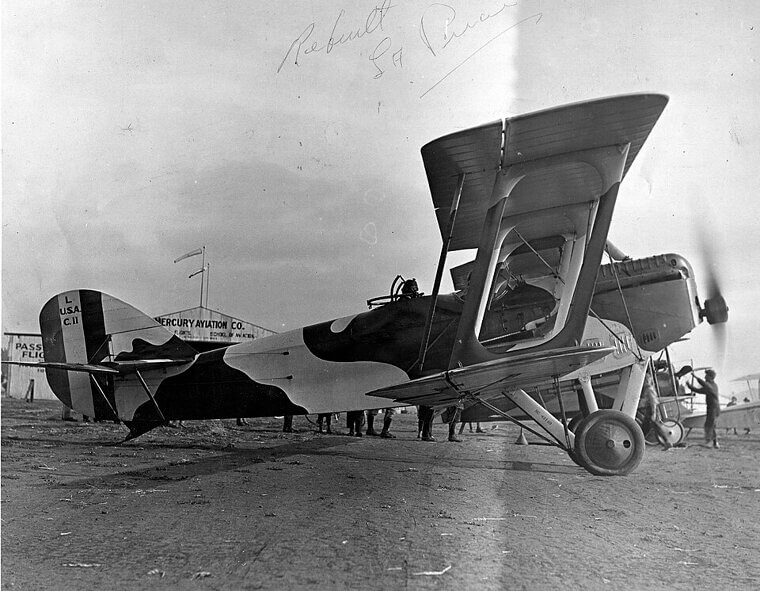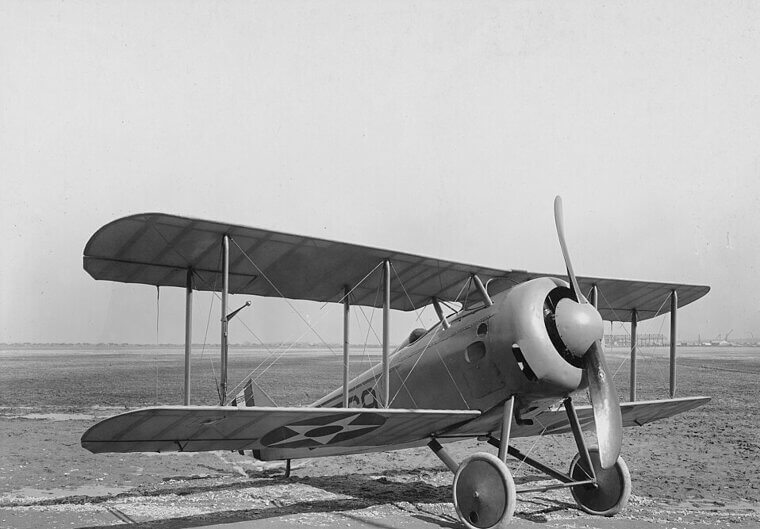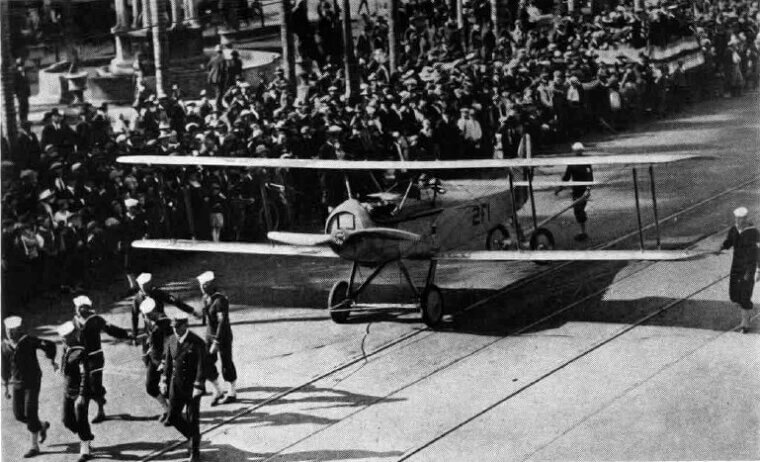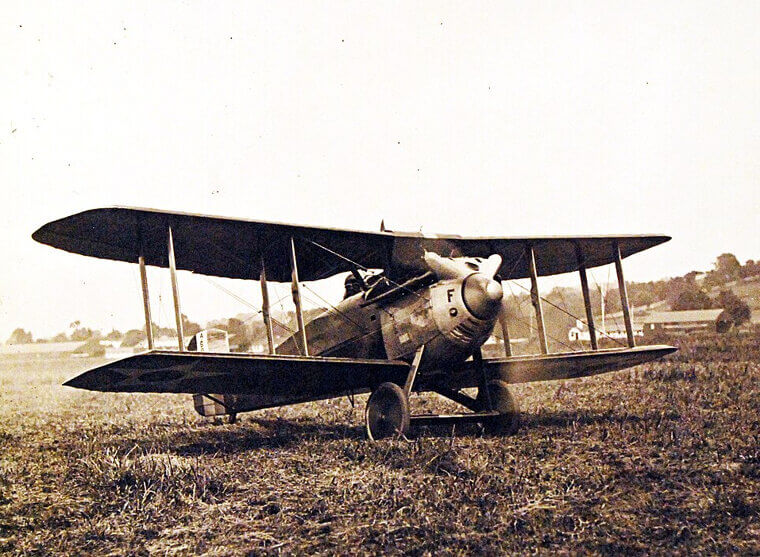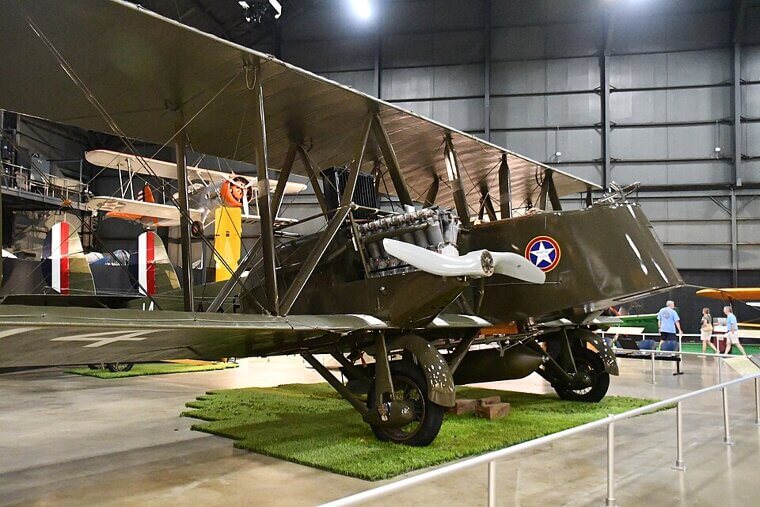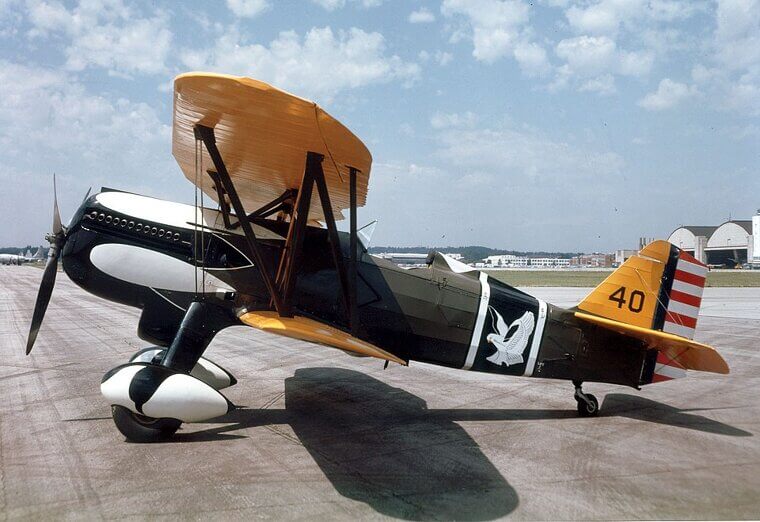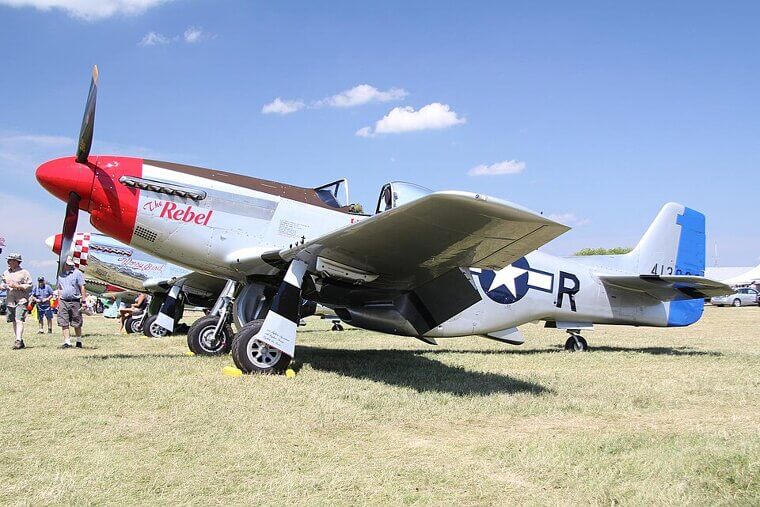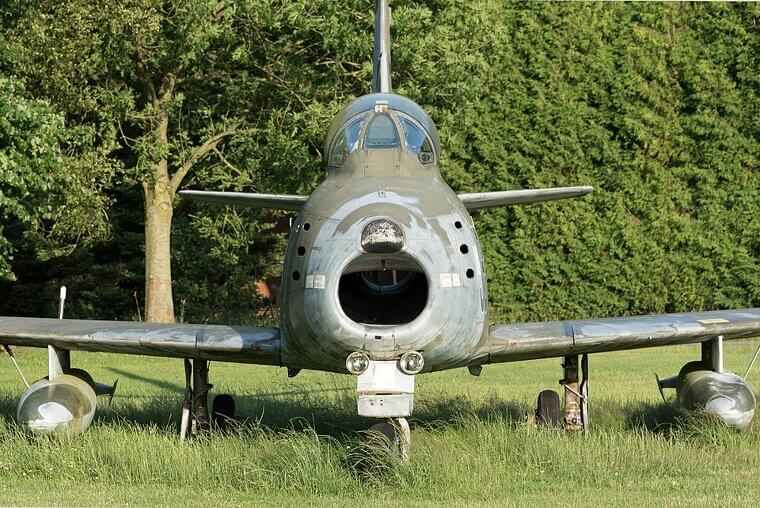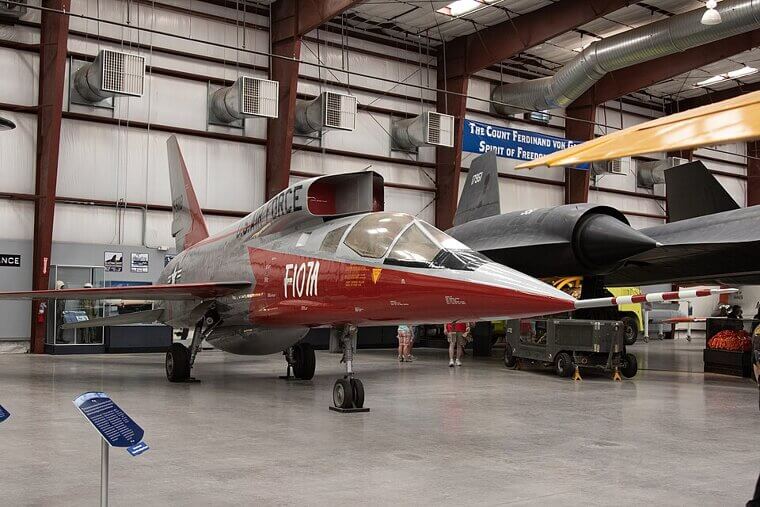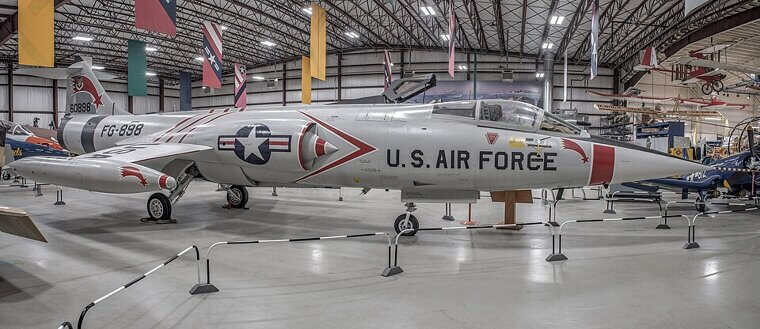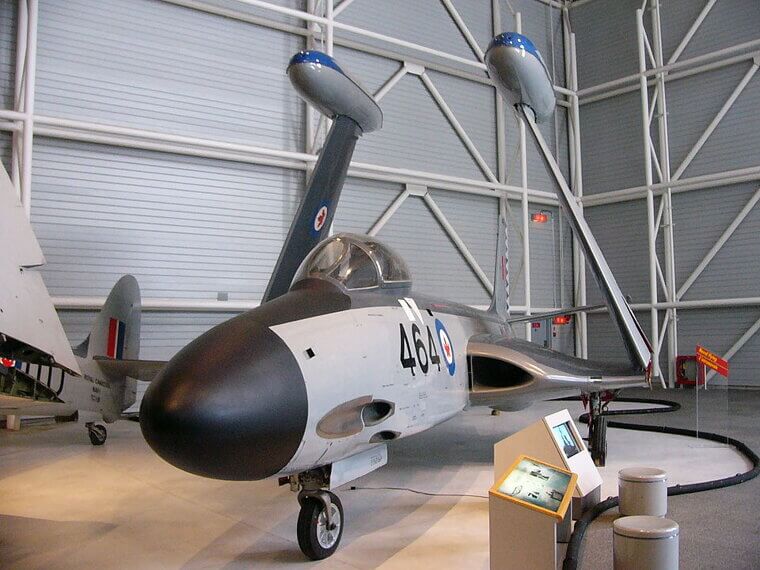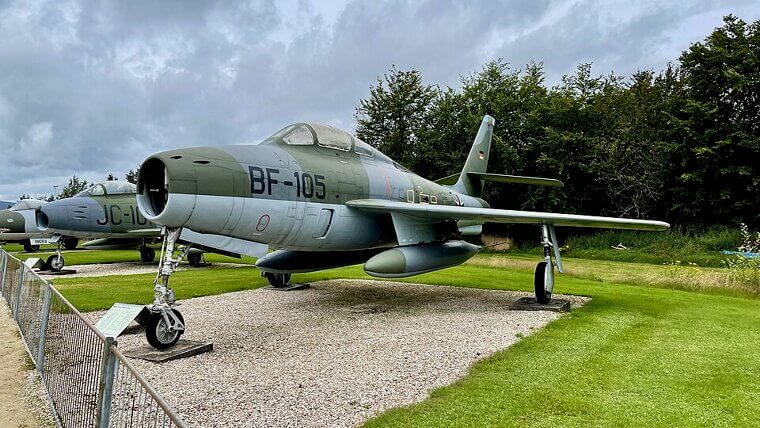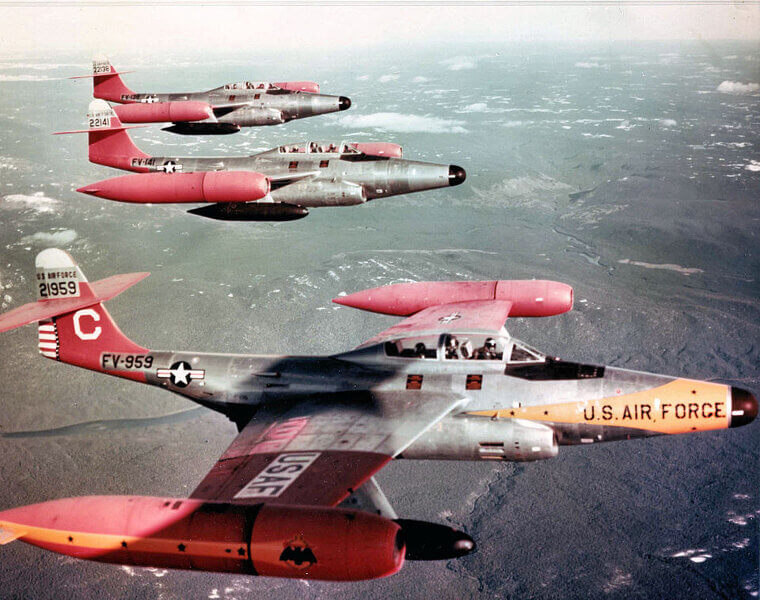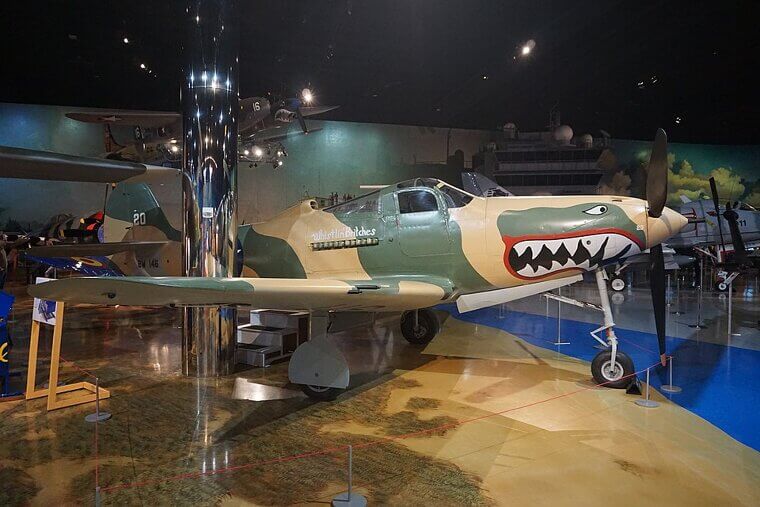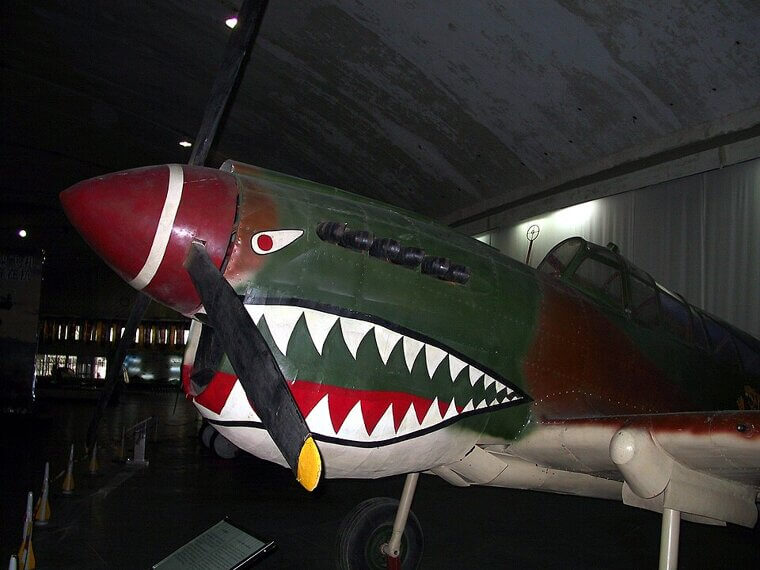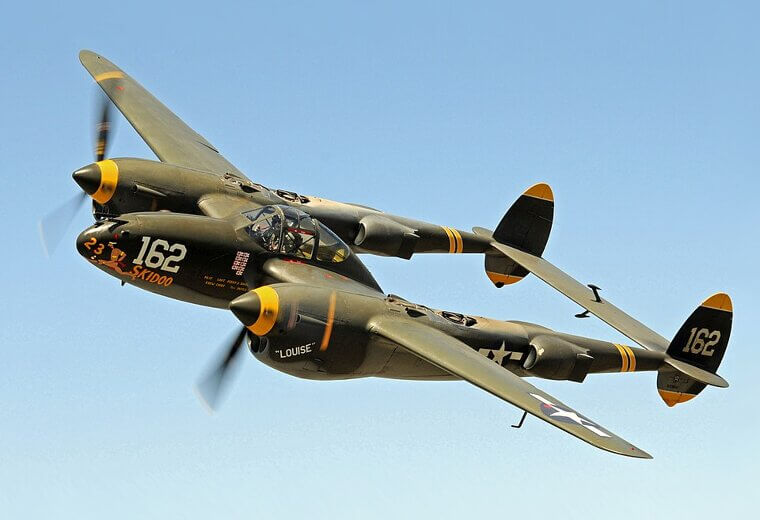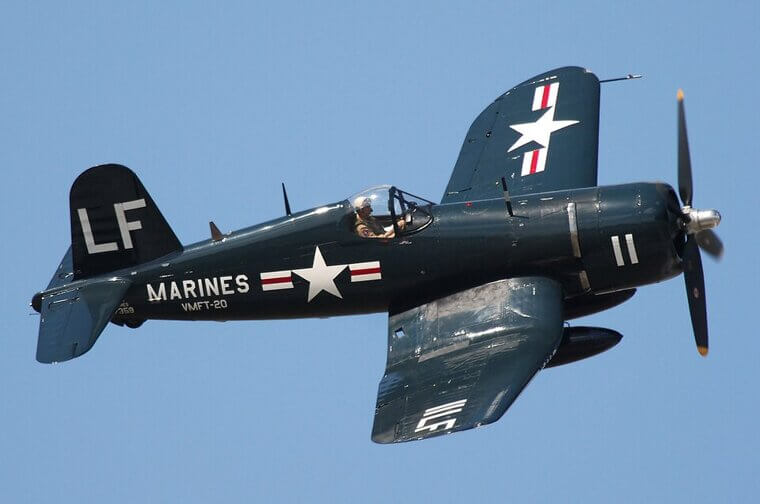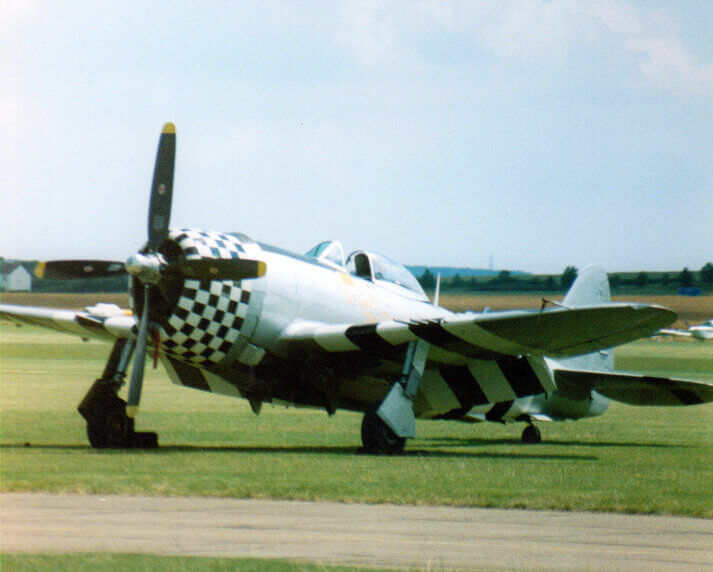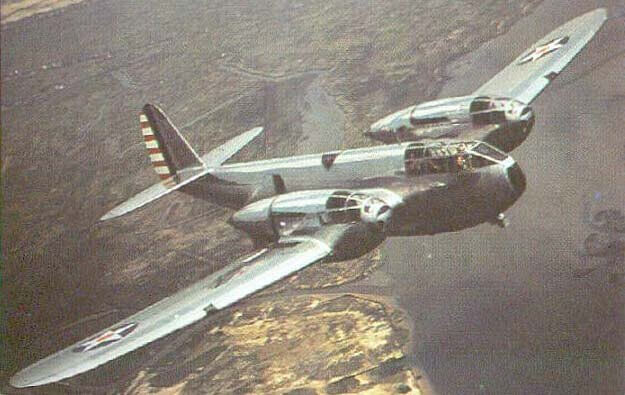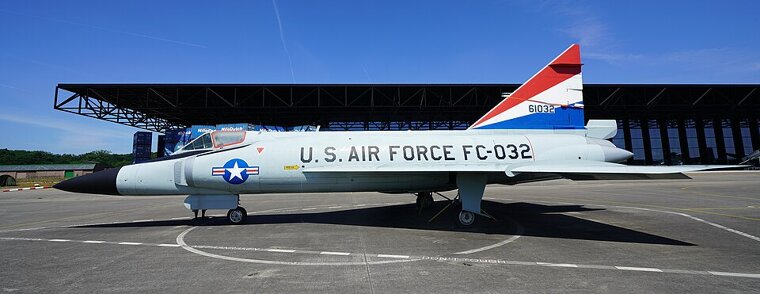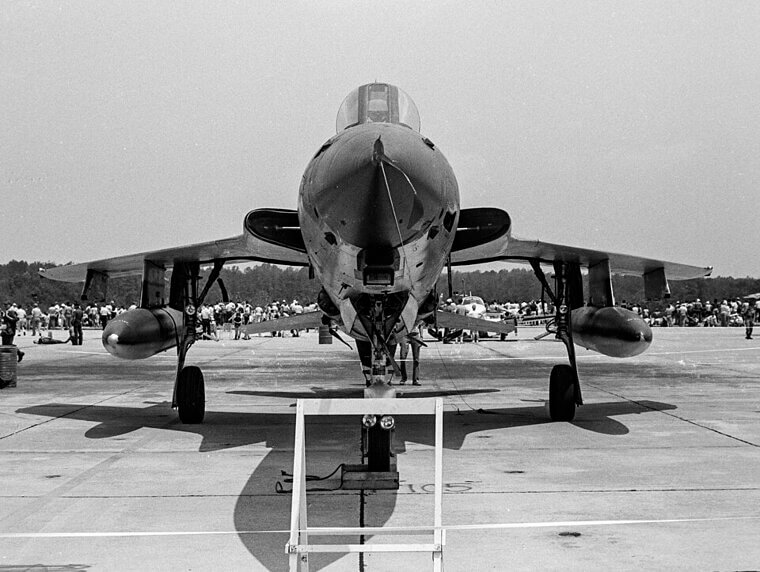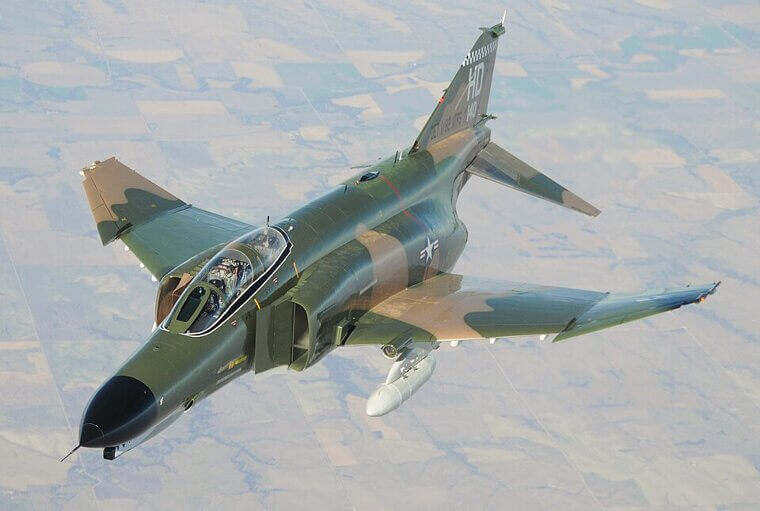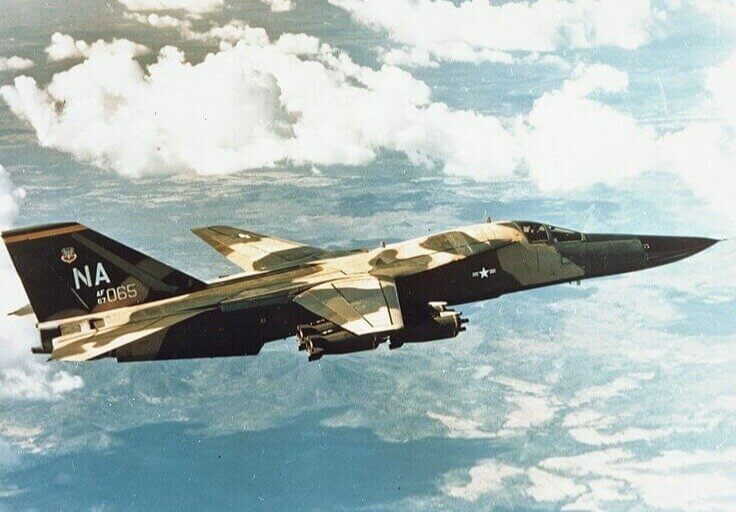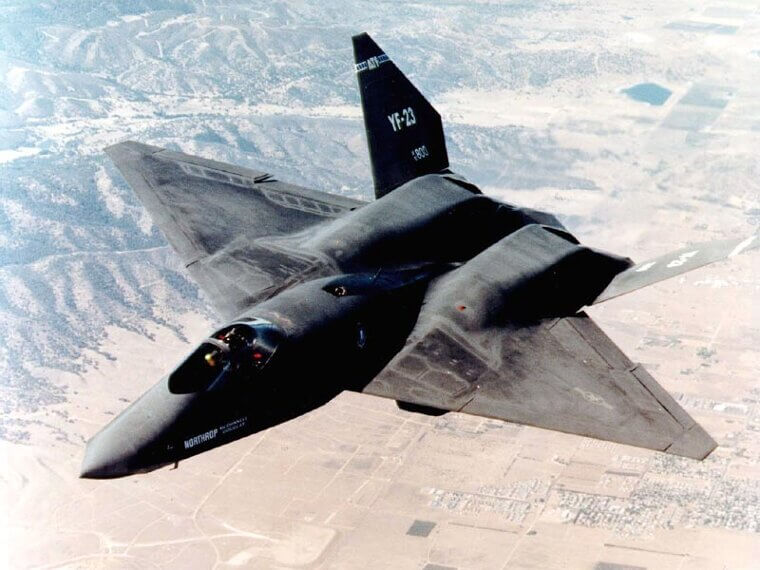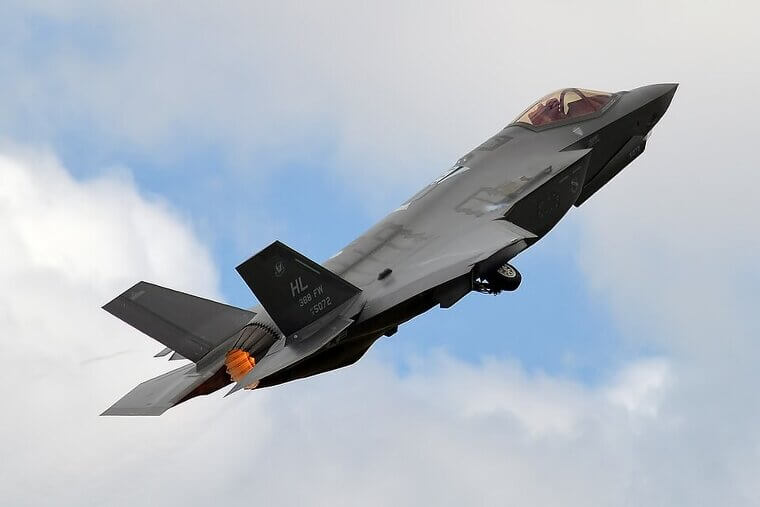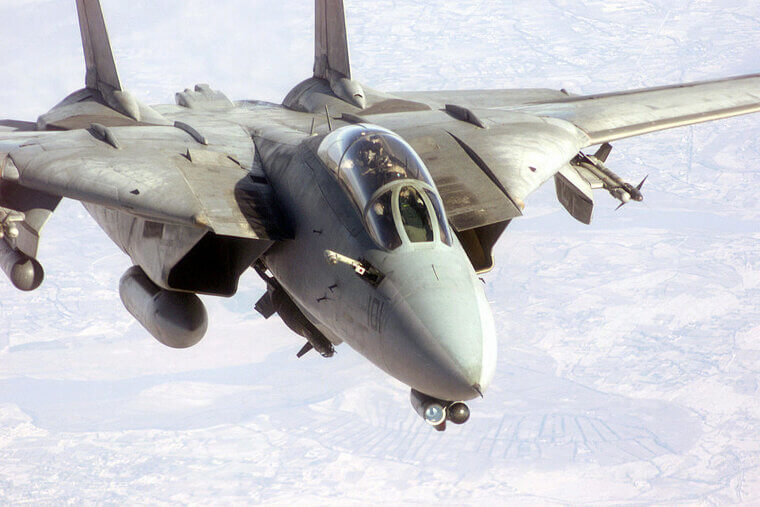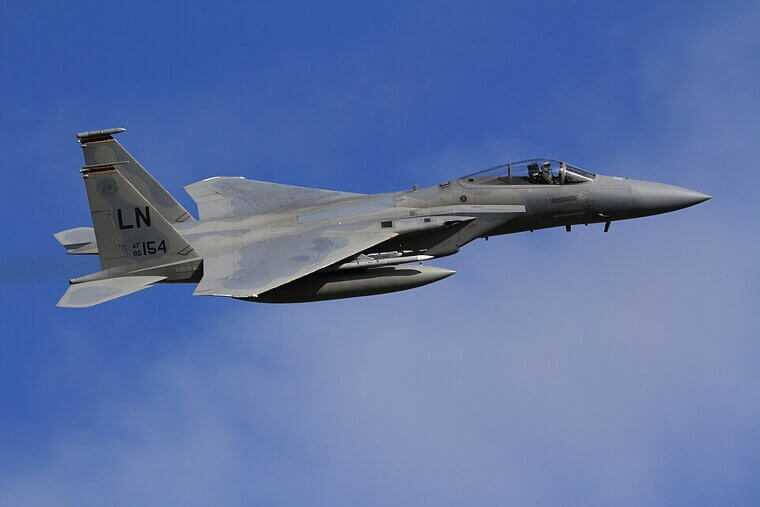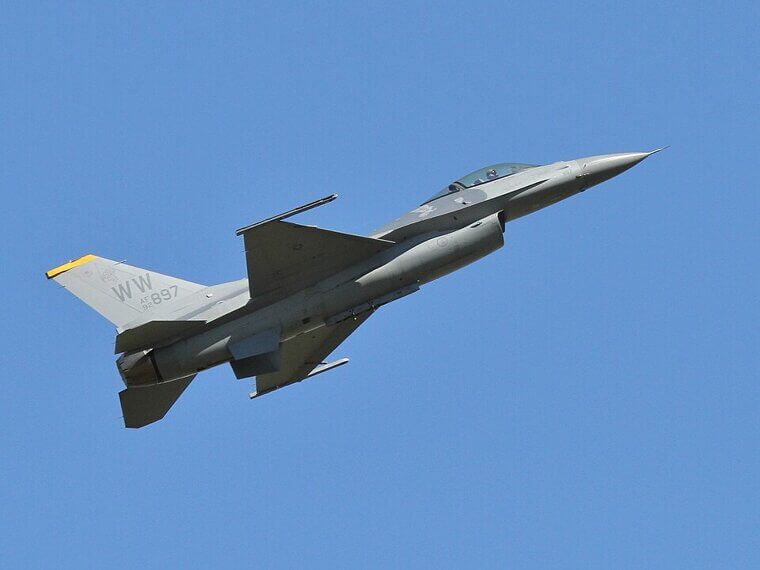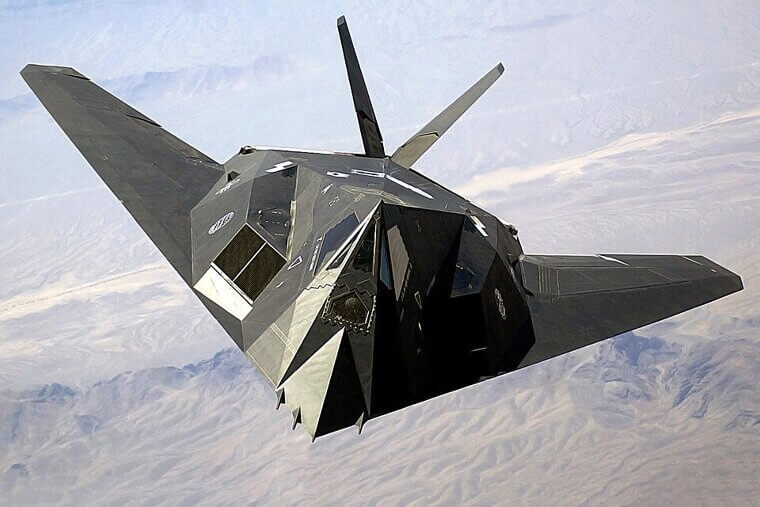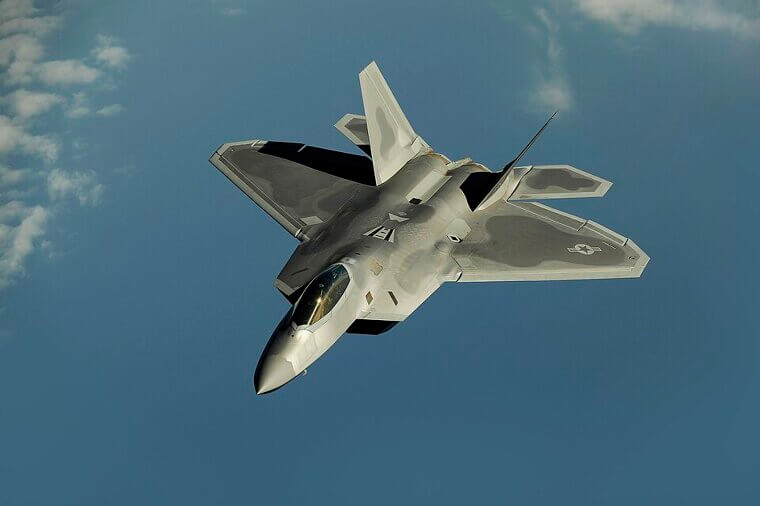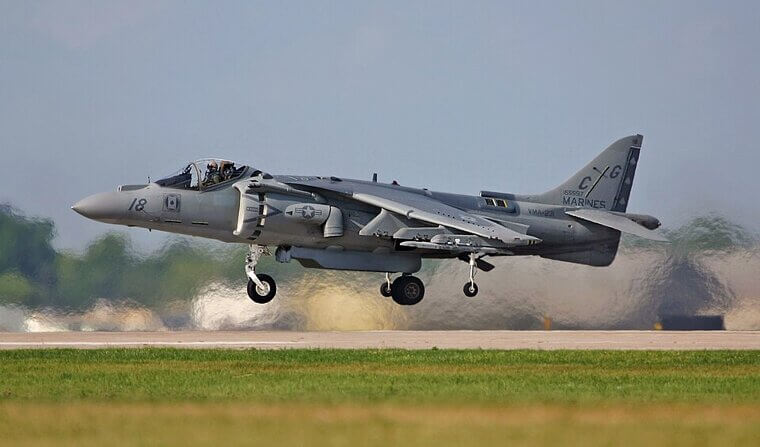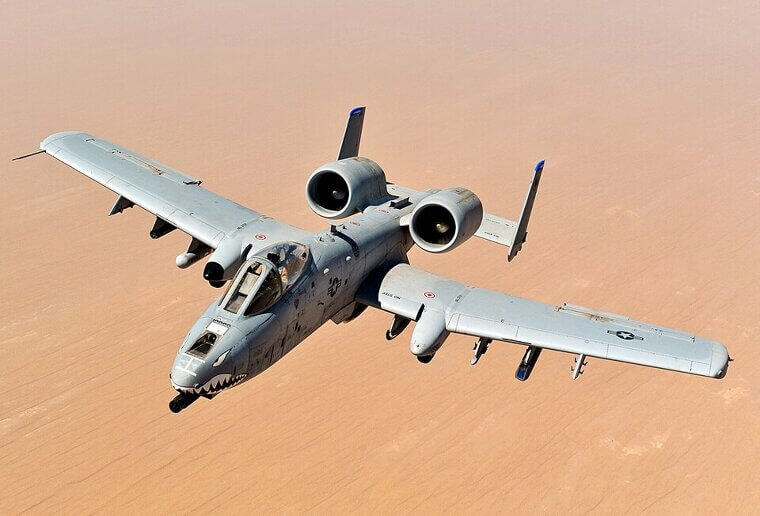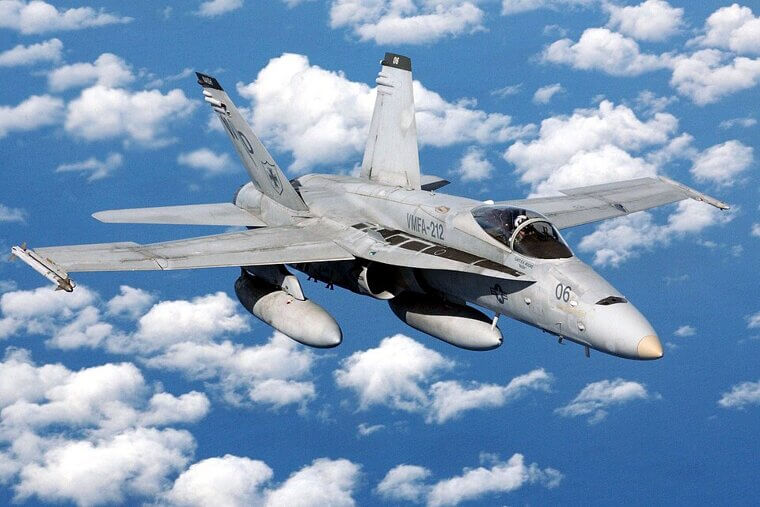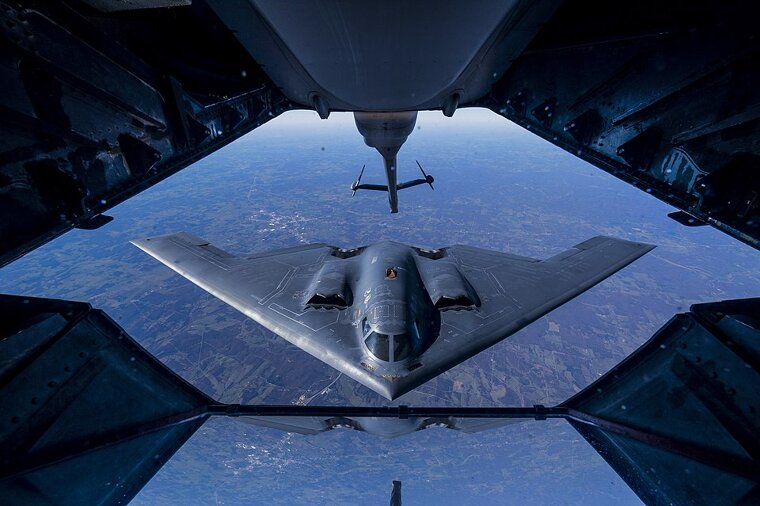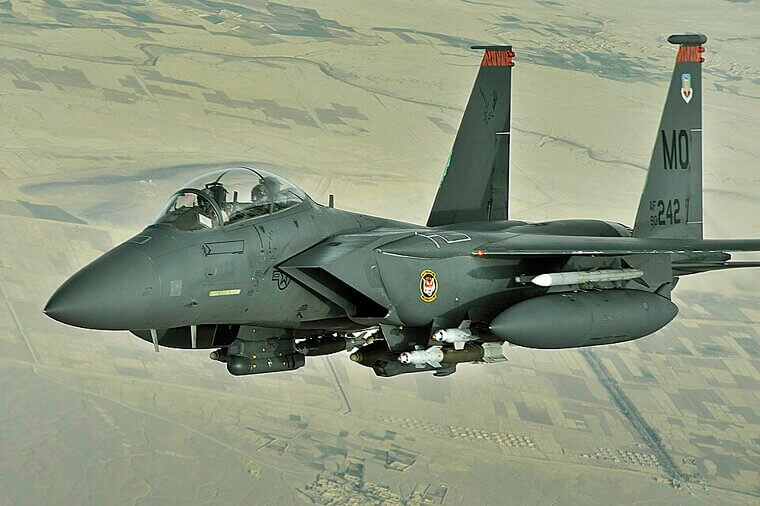LUSAC-11/21
As World War One was coming to an end in 1918, the LUSAC-11 made its debut flight. Utilizing a Liberty engine, it was built for high-altitude interception. The plane could climb to 20,000 feet and hit speeds of over 133 mph. Neat! But the LUSAC-21 improved on that even further. Developed post-war, it rocked a Bugatti 16 engine that was capable of producing 420 horsepower. They were both awesome.
Standard E-1 (“Old Reliable”)
During the First World War, the U.S. Army Air Service called upon a robust biplane to help train their pilots. The aircraft in question? The Standard E-1. This thing was stable, had acceptable maneuverability, and boasted two different rotary engine options. The Gnome was the standout, producing around 100 horsepower. It wasn't nicknamed "Old Reliable" for nothing, folks! And we've got plenty more cool American fighter planes coming up...
VE-7 “Bluebird”
With its blue color scheme and Wright-Hispano engine, the VE-7 “Bluebird” was a hard plane to ignore back in the early '20s. It was a naval vehicle, designed to operate from the U.S. Navy's aircraft carriers. This thing was a pioneer in that respect — it helped to develop carrier aviation tactics and techniques going forward. Nice!
Thomas-Morse MB-3
After using French-built SPAD fighters in the First World War, the U.S. Army Air Service developed a replacement over the following years. The result? Well, say hello to the Thomas-Morse MB-3. This aircraft made its bow in 1922, rocking a Wright H V8 engine. It could reach 141 mph in the skies. Although it wasn't perfect, it did advance fighter plane designs in America going forward.
Martin MB-2
No one wanted to mess with the Martin MB-2 — it was a fierce machine! The biplane bomber had an all-metal fuselage, two Liberty L-12A engines, and was capable of carrying a 3,000-pound payload. It could also house four crew members. Not bad for an early '20s effort, right?
Curtiss P-6 Hawk
As the 1920s were coming to a close, the U.S. Army Air Corps introduced a brand-new biplane fighter to its ranks. And boy, was it a hit! Yep, the Curtiss P-6 Hawk was very popular with pilots in the years that followed. It had a great look and excellent maneuverability in the air.
North American P-51D Mustang
To call the North American P-51D Mustang an important aircraft feels like an understatement. A major one at that! This fighter played a huge role in turning the tide of the air warfare above Europe during World War Two. It had incredible range thanks its Rolls-Royce Merlin engine. The plane also patrolled the skies as the Korean War raged on.
North American F-86 Sabre
Hands up if you're a fan of the North American F-86 Sabre. You won't be alone on that front — it's awesome! This transonic jet fighter was a major player during the Korean War, outmaneuvering the Soviet-built MiG-15s in the skies. It was capable of hitting speeds close to Mach 1 when push came to shove.
North American F-107
The North American F-107 has always been something of rarity. Only three of them were produced during the 1950s. But man — that look! It's got such a cool design. The experimental fighter-bomber could surpass Mach 2 in the air, while it was also capable of carrying a nuclear payload. How does our next entry compare? Let's find out...
Lockheed F-104 Starfighter
Supersonic interceptors don't come much cooler than the Lockheed F-104 Starfighter. This thing was a beast! It could zoom past Mach 2 in the skies. And that design? Wow. It was slick, aerodynamically pleasing, and had eye-catching wings. The plane's nickname was a keeper, too — "The Missile with a Man in It."
McDonnell F2H Banshee
The McDonnell F2H Banshee was in service for 13 years between 1948 and 1961, helping both the U.S. Marine Corps and the Navy. It played a critical role in the Korean War, with pilots lauding its maneuverability and reliability. The carrier-based jet fighter could also reach speeds of 580 mph, which isn't anything to be sniffed at.
Republic F-84F Thunderstreak
Fast? Check. Formidable? Check. Nice to look at? You bet! Yep, the Republic F-84F Thunderstreak ticked a lot of boxes during its 17-year service. It was a familar face in the sky as the Cold War rumbled on, joining NATO's forces across Europe. As it could carry a nuclear payload, the fighter-bomber served as a strong deterrent.
.
.
Northrop F-89 Scorpion
Did the Northrop F-89 Scorpion have a sting in its tail? Absolutely! This all-weather interceptor was another major player during the Cold War. It could carry air-to-air nuclear weapons, which were aimed to counteract the danger posed by Soviet bombers. The aircraft was an excellent asset over its 19-year service.
Bell P-39 Airacobra
Visually, the Bell P-39 Airacobra was one of the coolest fighters to serve in World War Two. But that's not all — it was very unique as well. Unlike other aircraft of that time, the plane's engine sat behind the cockpit. Due to that design, a 37mm cannon could be utilized via the propeller hub. Clever!
Curtiss P-40 Warhawk
An iconic figure during World War Two, the Curtiss P-40 Warhawk deserves its flowers today. It was a proper workhorse, providing robust performances at low-altitude. And the paint job? Woah. Who wouldn't be intimidated by that snarling face in the air? It was fearsome, to say the least!
Lockheed P-38 Lightning
The Lockheed P-38 Lightning was quite the aircraft. It was a twin-engine fighter that got a lot of attention in World War Two, producing speeds of 400 mph-plus in the skies. Thanks to its cool design, the plane could also serve multiple uses. Long-range escorting? Reconnaissance? Interception? The list goes on!
Vought F4U Corsair
Trust us when we say this, folks — you didn't want to get on the Vought F4U Corsair's bad side. This fighter was incredibly fearsome during World War Two. Both the U.S. Marine Corps and the Navy relied on it throughout the conflict. It still got plenty of use going into the '60s, too!
Republic P-47 Thunderbolt
Struggling to take your eyes off the Republic P-47 Thunderbolt? We don't blame you — this thing was massive! It was by-far one of the biggest fighter planes to see action in World War Two. The P-47 wasn't a slouch, though. It could hit 430 mph in the air.
YFM-1 Airacuda
We won't beat around the bush here — the YFM-1 Airacuda looked incredible. It was an experimental heavy fighter that housed two Allison V-1710 engines. But this '30s effort couldn't overcome its raft of technical problems. As a result, it was never used in a real combat situation. Such a shame!
Convair F-102 Delta Dagger
As America's first supersonic interceptor, the Convair F-102 Delta Dagger's place in the history books is assured. It made its bow in 1956, and went on to play a significant role throughout the Cold War. The aircraft's awesome appearance was just an added bonus!
Republic F-105 Thunderchief
Was the Republic F-105 Thunderchief as formidable as its name suggested? We'd say so. This supersonic fighter-bomber got a lot of use during the Vietnam conflict, gaining a reputation for its durability. It was extremely fast, too. The plane could surpass Mach 2. Impressive, right?
McDonnell Douglas F-4 Phantom II
Good luck naming a more reliable Cold War-era aircraft than the McDonnell Douglas F-4 Phantom II. As a long-range supersonic fighter-bomber, it was frequently used by the U.S. Marine Corps, the Navy, and the Air Force following its introduction in 1960. Its versatility was unmatched!
General Dynamics F-111 Aardvark
A combat radius exceeding 1,300 miles? A top speed of Mach 2.5? It's no wonder that the General Dynamics F-111 Aardvark had so many fans! This supersonic, medium-range tactical aircraft was a game-changer when it debuted in 1967. It revolutionized air warfare going forward.
Northrop YF-23
The Northrop YF-23 still has the power to take your breath away. Just look at this thing! From the diamond-shaped wings to the eye-catching V-tail, it's a spectacular design. But the advanced tactical fighter didn't make it past the prototype stage. What a bummer.
Lockheed Martin F-35 Lightning II
Would you turn your nose up at the Lockheed Martin F-35 Lightning II? We didn't think so. This supersonic multirole fighter was introduced to the world in 2015 and has three different variants. They all look cool! Its advanced stealth technology is particularly impressive.
Grumman F-14 Tomcat
How can you not be impressed by the Grumman F-14 Tomcat? This supersonic, twin-engine fighter was a go-to aircraft for the U.S. Navy for over 30 years. Its wing configuration could be adapted to improve performances in the air, while its radar system was incredibly powerful.
McDonnell Douglas F-15 Eagle
How's this for an awesome record? Since its introduction in 1976, the McDonnell Douglas F-15 Eagle has never lost an air-to-air dogfight. It's racked up more than 100 victories in that time. Wow! You can't question this thing's air superiority, folks.
F-16 Fighting Falcon
Agile, versatile, and jaw-droppingly quick, the F-16 Fighting Falcon is a hard plane to ignore. It can pull off 9G moves in the air! Since making its debut in 1978, this cool fighter has continued to get better with each new tweak.
F-117 Nighthawk
The importance of the F-117 Nighthawk can't be overstated. Remember, folks — this was the first operational stealth aircraft on the planet. The public didn't know about it until 1988, which was five years after it originally launched. Aerial warfare has never been the same since.
F-22 Raptor
The F-22 Raptor is a spectacular machine. As a twin-engine stealth tactical fighter, it boasts some amazing techology. The integrated avionics deserve a special mention! And its speed? Oh boy. It can hit Mach 2.25 when pushed to its limit.
AV-8B Harrier II
The AV-8B Harrier II is more than a pretty face. It's the perfect pick for multirole missions, excelling in armed reconnaissance and close air support. The U.S. Marine Corps get plenty of use out of it, as do the Italian and Spanish Navy.
A-10 Thunderbolt II
Otherwise known as the Warthog, the A-10 Thunderbolt II is an incredibly impressive fighter plane. It's specifically designed to provide close air support for ground forces. No other aircraft in the U.S. Air Force's lineup does that job better.
F/A-18 Hornet
Ah, the F/A-18 Hornet. What a machine! This twin-engine supersonic combat jet not only looks amazing, but it has standout performances as well. A maximum speed of Mach 1.8? Yes please. Its aerodynamic design continues to blow people away.
B-2 Spirit
Is the B-2 Spirit the most visually-striking plane on this list? It's got to be in the running! The stealth bomber emerged in the late-'80s, boasting an eye-popping design. Due to its shape and the materials used to build it, it was close to invisible on radar systems.
F-15E Strike Eagle
The F-15E Strike Eagle is one mean plane! This all-weather multirole fighter has been completing long-range air support missions since the '80s, rocking a cool dark camouflage. And retirement isn't on the cards yet. The U.S. Air Force intend to keep using it well into the 2030s.

